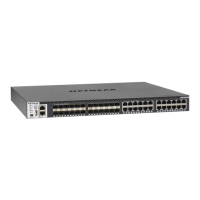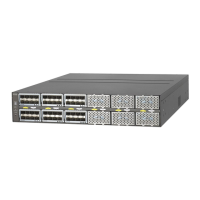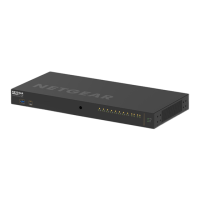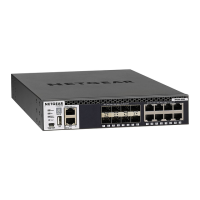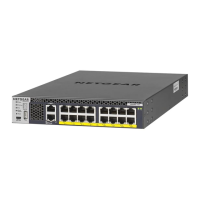Use the Auto Install Configuration
24
M4100 Series Switches
About Managing the Downloaded Configuration Files
The configuration files downloaded through Auto Install are stored in nonvolatile memory.
The files can be managed (viewed, displayed, deleted) along with files downloaded through
the configuration scripting utility.
A configuration file is not automatically deleted after it is downloaded. However, the
configuration file does not take effect upon a reboot. If you save the configuration file, the
saved configuration takes effect upon reboot. If you do not save the configuration file, the
Auto Install process occurs again on a subsequent reboot. A repeated install might cause
previously downloaded files to be overwritten.
About Restarting the Auto Install Process
If the configuration file is not found on the switch, the Auto Install process automatically starts
a subsequent reboot. A restart of the install process can occur if the configuration was never
saved on the switch or if you issued a command to erase the configuration file.
During a particular session, you can restart the Auto Install process if you previously stopped
it during the same login session. This action reinitiates the process for that login session only.
NETGEAR recommends that you restart the install process only when you are certain that
the configuration is clear.
If no configuration file is stored on the switch, reinitialization of the switch after you entered
the erase startup-config command automatically activates the Auto Install process.
Event Logging for the Auto Install Process
The switch logs a message for each of the following events:
• The Auto Install component receives a configuration file name and other options upon
resolving an IP address through a DHCP client. The boot option values are logged.
• The Auto Install component initiates a TFTP request for a boot (configuration) file and
receives the file, or the request times out. File names and server IP addresses and host
names are logged.
• The Auto Install component initiates a request for a host name. The IP address and
resolved host name are logged.
• The Auto Install component initiates a TFTP request for a hostname.cfg file and
receives the file, or the request times out. File names and server IP addresses and host
names are logged.
• The start of a configuration script is being applied.
• The CLI scripting utility fails to apply a configuration file.
• The Auto Install process is complete.
• The name of the specified configuration file conflicts with a reserved configuration file
name.
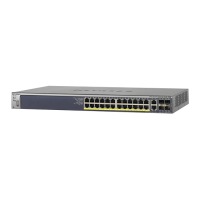
